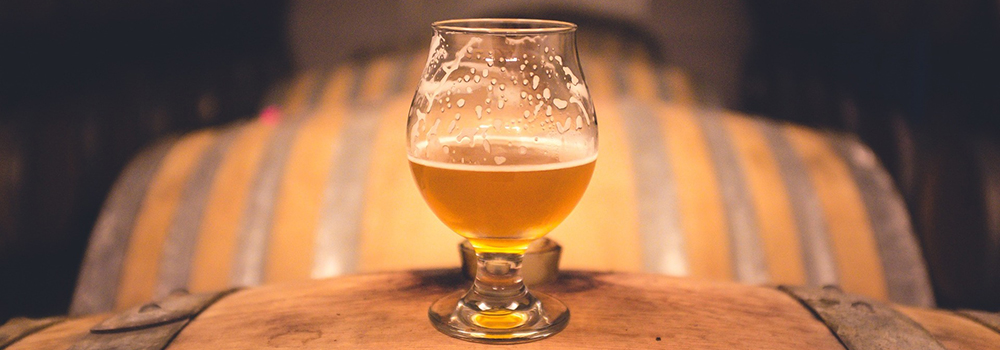A few weeks ago, I had the opportunity to share some beers with the founder of an up-and-coming brewery based out of Minneapolis, Minnesota. The past few years have been a time of tremendous growth in the craft brewing industry. There are nearly 120 craft breweries in Minnesota alone – all working hard to create unique, high quality brews.
During our tour, I noticed the area dedicated to the lab was smaller than I expected. I understood that as a trendy new company they may not feel the need to dazzle the tour-goers with their beakers, but I was curious about the fundamentals. So I asked: if there were four things that matter most in beer quality, what would they be?
1. Dissolved Oxygen
This quality measurement is an indication of how much oxygen is present in the brew. Controlling the amount of oxygen allowed during various portions of the brewing process has a profound effect on the final taste. Not enough oxygen and the yeast will not be able to sufficiently ferment. Once the brewing process is complete, the goal is to have as little oxygen left as possible in the final packaged product. Any prolonged exposure to remaining oxygen will cause the beer to become stale, bland, or vinegary. Dissolved oxygen is measured in parts per billion and anything under 100 ppb is desirable.
2. Micro Plating
Micro plating is the practice of periodically sampling the beer throughout the brewing process to see what grows. This technique is used to detect low-level contaminants in the tanks before they get out of control. Combinations of techniques are used; usually starting with membrane filtration followed by aerobic and anaerobic incubation on selective media to enhance any potential spoilers. Basic staining can be used to confirm any growth and help sanitize appropriately.
3. Gravity and pH
Beer gravity is not some natural force that helps keep the liquid in your glass as you tumble around – rather this refers to the “density” of the beer. Specifically, the total amount of dissolved solids (sugars) present in the water. Yeast is counting on these sugars for fermentation so the more sugars that are present, the stronger the beer and the higher the gravity. Different varieties of beer styles are each aiming for a particular range of gravity. This measurement is an important factor when striving for consistency in the product.
pH is an important measurement in any part of natural science. Fermentation is not an exception. During the brewing process, pH controls the extraction of proteins and sugars as well as enzymatic activity. Enzymes in beer are most efficient when the pH is between 5.2 and 5.8. If the pH strays too far from these ranges it can result in an insufficient amount of sugar available for fermentation. Yeast also change the pH of the brew. During fermentation, the yeast will naturally lower the pH to around 3.8 to 4.8 for finished product. After the brew is complete, beer with a lower pH will stay fresh longer than a beer with higher pH.
4. Shelf Life and Stability Studies
Producing a brew that maintains its quality for a long period of time is also important. Breweries will conduct shelf life and stability studies on their packaged products to see what variety of conditions will alter their beer within a specific timeframe. Kegs will be intentionally spiked with bacteria and then tasted over a period of time to determine at exactly what point the flavor profile begins to shift. Additional stability measurements include brew clarity and overall microbial stability. Multiple controllable factors can greatly affect brew stability such as exposure to light and elevated temperatures. Many college students can attest to the aftermath of a forgotten case of beer in a warm car. Don’t let it happen to you – it is easy to respect your beer!
With all this talk about the various ways beer quality is ensured, what exactly are we protecting the beer from? Although any multitude of organisms can infiltrate the brewing tanks and wreak havoc, below are some of the most common culprits:
Lactobacillus
Lactobacillus is a facultative anaerobe which means it can ferment in either the presence or absence of air, but prefers reduced oxygen levels. This makes the brewing process the perfect place for this strain to thrive; eating the sugars from the wort and converting them to lactic acid rather than alcohol. All Lactobacillus will slowly create lactic acid and some will create diacetyl during fermentation. Both of these by-products will alter the beer profile. Unwanted Lactobacillus in a brew can result in a tart sour complexity when at a high enough concentration.
Pediococcus
Pediococcus is another common spoilage strain for beer. It is a microaerophilic strain that also prefers reduced oxygen levels. Pediococcus produces lactic acid and diacetyl at a much more aggressive pace than Lactobacillus, and the rapid proliferation of Pediococcus in brewing tanks can actually inhibit the growth of yeast resulting in decreased fermentation. The effect on flavor can be an increase in acidity accompanied by a buttery aroma. Pediococcus is one of the toughest types of bacteria to eradicate in a brewery.
Wild Yeast and Mold
Wild environmental contaminants can be some of the most difficult to combat. Unintentional wild yeast in the tank can result in a wide variety of undesired flavors such as rotten egg (hydrogen sulfide), fruity (esters), and sour (acidic) notes.
Unless a brewery also specializes in making bleu cheese, there is hardly a desire for any molds to be present in or around the brewing process. Mold can hide in almost any damp location with a little help from some fresh air and a food source. Proper sanitation of kegs and the brewing tanks is crucial in deterring mold from forming.
As in any production process, a solid program dedicated to QC and stability is always a worthwhile investment. Regardless of the size of the facility, there are always core parameters that can be measured to ensure that each batch of beer is produced uniformly and consistently. You don’t want to sit down after a long day and crack open your favorite brew only to find that it has turned green – unless it’s St. Patrick’s Day!
There once was a mid-march day
When people would gather and say:
“St. Patrick’s Day’s here!
Let’s feast and drink beer!”
And they’d cheer the night away!
Happy St. Patrick’s Day!
Resources:
https://www.gastrograph.com/blogs/gastronexus/quality-control-in-beer-production-part-3.html
https://www.morebeer.com/brewingtechniques/library/backissues/issue2.5/allen.html
https://www.craftbeer.com/craft-beer-muses/defining-gravity
https://www.gastrograph.com/blogs/gastronexus/quality-control-in-beer-production-part-2.html
https://www.brewersassociation.org/attachments/0001/3980/EDP_Quality.pdf
https://byo.com/stories/issue/item/3134-beer-spoilage-advanced-brewing






I will be more aware when drinking my next beer of the lo g process to make a good batch of brew
Nice explanation,